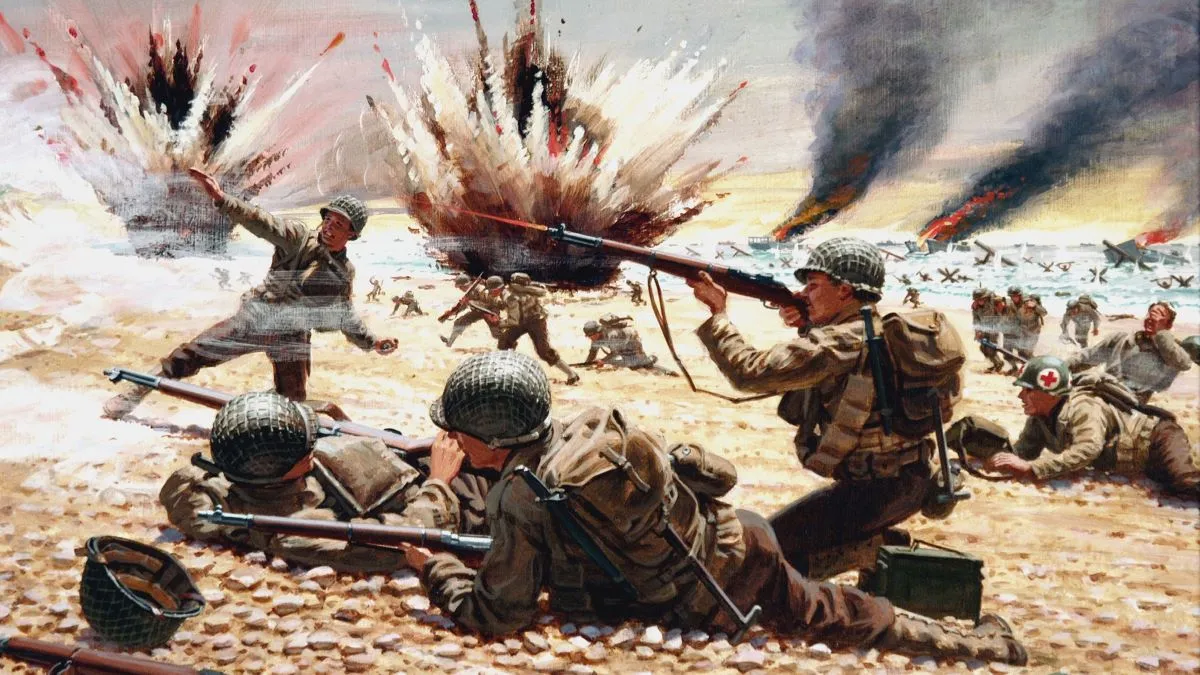When the Allies in World War II stormed Normandy beach on June 6, 1944, it was one of the biggest moments of that massive whole conflict. After the Allies defeated the German U-boat patrols in the Atlantic, they set their sets on liberating Europe from Nazi control. This was the first step in defeating the Germans in Western Europe and stopping Hitler, which they eventually did. So why Normandy Beach?
What happened on D-Day at Normandy?
D-Day was the largest military operation of its day. It was code-named Operation Overlord and saw more than 155,000 troops storm the beaches of France and make their way through occupied enemy territory. By the end of the invasion, there would be over 326,000 troops, 50,000 motorized vehicles, and more than 100,000 tons of military equipment in France.
Germany invaded and occupied France the year before the Americans entered the war in 1941. By 1943, the Allies were thinking about invading France. Hitler caught wind of the invasion but the Nazis didn’t know where exactly the Allies would land, so Hitler put a man named Erwin Rommel in charge of defense. Rommel built what was known as the Atlantic Wall; 2,400 miles of landmines, obstacles, and bunkers along the coast.
The Allies wanted Germany to think they were landing at the most obvious place, Pas-de-Calais, which was the thinnest area between France and Britain. On the British side of the Channel, they positioned inflatable tanks and artillery and even had a fake army stationed near that crossing. They also used spies and fake radio dispatches to fool the enemy into thinking this was where they would attack.
The Allies ultimately picked the Normandy beaches because it was close enough to where they could provide air support, and it was not as heavily fortified as the more obvious Pas-de-Calais. General Dwight Eisenhower chose June 5, 1944, but the weather wasn’t ideal so it was delayed for a whole day. Eisenhower told his troops: “You are about to embark upon the Great Crusade, toward which we have striven these many months. The eyes of the world are upon you.”
Over 5,000 ships with troops aboard sailed across the English Channel to France, with 11,000 airplanes ready to provide support. The night before the 6th, paratrooper and glider troops had landed to help protect and hold essential roads for travel. The invasion started 30 minutes after 6 A.M. with British and Canadian troops capturing three beaches with fairly light opposition. Americans captured Utah Beach but suffered heavily on Omaha Beach, on which more than 2,000 American soldiers perished.
By the end of the day, some 160,000 troops had landed, with casualties of over 4,000. The beaches were secured by June 11 and the equipment started streaming onto the land. Luckily, Rommel was on vacation when the invasion started so there was chaos in the German ranks as they tried to figure out how to respond. Hitler thought the attack was a fake stunt to draw troops away from somewhere else, so he didn’t let certain divisions in the area join the fight.
That meant reinforcements had to arrive from farther away, which lost the Germans valuable time. He also waited to reinforce the troops with tanks and other armored defenses. Another key move by the Allies was destroying bridges and important roads so that reinforcements for the Germans were heavily delayed.
At the end of 1944, Germany had been booted out of northwestern France, and Paris was liberated. From there, the Allied forces would enter Germany proper and meet up with the Soviets to go after Hitler and crush the Nazis once and for all. Nazi Germany surrendered on May 8, 1945, effectively ending the war.

